How Did We Get Here? | The Gold Standard 2338
https://www.midasgoldgroup.com/
In this episode, we look at how we arrived at this crossroads of financial instability, marked by inflation and government debt. Ken Russo sheds light on the historical shift away from the gold standard.
In 1971, the Nixon Shock marked a seismic shift in the global economy. Previously, the US dollar was anchored to a tangible standard - gold. The Bretton Woods Agreement of 1944 pegged the value of gold at $33. However, mounting pressure from countries like France, who preferred gold over US currency, led to a tipping point. President Nixon severed the link between the dollar and gold in response. For a brief period, US citizens were legally forbidden to own gold, a restriction lifted by President Ford in 1974. This prohibition marked a new era where a tangible asset no longer backed the US dollar but relied on confidence in the government’s stability. Since then, the dollar’s value has experienced significant erosion, compounded by a banking system plagued by insolvency risks and a government grappling with unchecked spending. In the last ninety days alone, the US Government has spent a staggering trillion dollars, equating to an over-spend of ten billion dollars daily, or $370 million each hour. As the dollar faces these challenges, more countries are exploring alternatives to the US dollar.
Jennifer and Ken share a question they’ve received from one of the show’s listeners. The question is, “What is meant by drowning in debt?” Imagine a household continuously spending more money than it earns, relying on loans to bridge the gap. Over time, this debt accumulates, becoming an overwhelming burden. Similarly, on a larger scale, when a government consistently spends more than it takes in, it incurs debt. This situation, often called a system drowning in debt, can lead to significant economic challenges. One critical aspect of this financial strain lies in unfunded liabilities, which are commitments the government has made, particularly in programs like Social Security and Medicare, without adequate resources to cover them.
The Social Security Trust Fund, which started in 1935, once had enough contributors to support retirees receiving payments. However, the ratio of contributors to retirees has declined, leading to concerns about its long-term sustainability. Medicare also faces funding challenges due to the decreasing number of workers supporting the program. Medicare and Social Security account for 95% of the US Government’s long-term unfunded obligations, totaling a staggering $79.5 trillion over the next 75 years. The government may have to reduce benefits, increase taxes, or both. It’s important to understand that these figures represent the gap between projected spending and total revenue. Any way you look at it, there’s a need for substantial adjustments, equivalent to about 4.9% of the country’s Gross Domestic Product (GDP) annually. Delaying these reforms will significantly increase any required adjustments in the future.
This volatile landscape prompts a crucial question: How can we safeguard our financial well-being in these uncertainties? Converting some assets into precious metals like gold and silver is a strategic move for many seeking stability and preservation of wealth. Unlike paper currency, which can be affected by inflation and government policies, precious metals have intrinsic value that has stood the test of time.
As Ken carefully presents the 1974 1oz Gold Krugerrand, he unveils a tangible piece of history that holds immense significance in the world of precious metals. This iconic coin, minted in South Africa, carries a legacy dating back decades. It symbolizes a pivotal moment in the evolution of gold as a recognized form of currency and investment. The Krugerrand, known for its high gold content and distinct design featuring Paul Kruger, the former President of South Africa, and the Springbok Antelope, became a trailblazer in bullion coins. In an era marked by economic shifts and uncertainties, this Krugerrand stands as a steadfast testament to the enduring value of gold, offering a timeless refuge for those seeking to preserve their wealth and financial security. Holding it in one’s hand serves as a potent reminder of the enduring power and stability that gold represents in an ever-changing economic landscape.
The Gold Krugerrand is renowned for its exceptional purity and quality. This iconic coin is 22-karat gold, composed of 91.67% pure gold and 8.33% copper alloy. This blend ensures the coin’s durability and imparts a distinctive reddish hue to its surface.
____________________________________________________________________________________________________
Listen to The Gold Standard: https://www.midasgoldgroup.com/gold-standard-radio-show/
Gold IRA: https://www.midasgoldgroup.com/gold-ira/
Invest in Gold: https://www.midasgoldgroup.com/buy-gold/
Guide to Owning Bullion & Coins: https://www.midasgoldgroup.com/bullion-guide/
Read the latest precious metals news: https://www.midasgoldgroup.com/news/
-
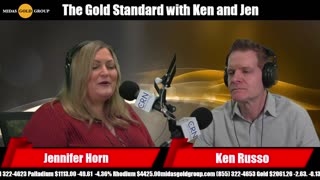 25:05
25:05
Midas Gold Group
4 months agoWhat’s Up Ahead? | The Gold Standard 2401
55 -
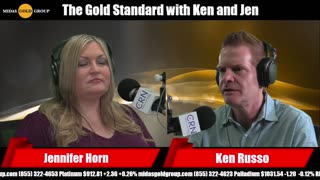 25:02
25:02
Midas Gold Group
2 months agoDon’t Comply | The Gold Standard 2413
48 -
 8:44
8:44
TheGlobalMacroDigest
4 months agoWhy You Should Not Buy Physical Gold And Silver
43 -
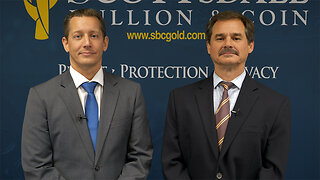 4:45
4:45
Scottsdale Bullion & Coin
22 days agoU.S. Debt Crisis: How We Got Here & Why "Something is Going to Break" | The Gold Spot
100 -
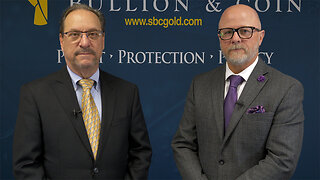 3:22
3:22
sbcgold
3 months agoEconomic Reality Check | Gold As Wealth Insurance | The Gold Spot
27 -
 26:13
26:13
ITM Trading
1 month ago $0.33 earnedGold and Silver Ripping in the Face of Higher Yields, Stronger Dollar
503 -
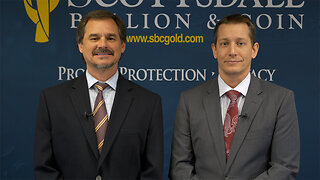 4:11
4:11
Scottsdale Bullion & Coin
3 months agoAll Signals Green 🟢 Why NOW Is the Prime Time to Buy Gold & Silver | The Gold Spot
60 -
 40:33
40:33
Liberty and Finance
24 days ago $3.99 earnedWhy Gold Is Just Getting Started | Rick Rule
2.03K3 -
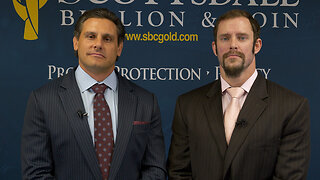 4:58
4:58
Scottsdale Bullion & Coin
7 months agoWhy Aren't Gold Prices Rising? Understanding the Fed, BRICS, & US Overspending | The Gold Spot
86 -
 3:54
3:54
Scottsdale Bullion & Coin
5 months agoVisualizing $34,000,000,000,000 U.S. Debt | The Gold Spot
1591